文章
Miss Chen
2018年05月15日

Across the month of March, gardeners in Tennessee prepare their soil beds in anticipation of planting potatoes. Rather than growing these vegetables from seeds, gardeners purchase small, healthy tubers called seed potatoes, which are certified disease-free. Since seed potatoes are planted in the ground and initially protected from frost, planting take place roughly two to four weeks before the average last spring frost date across the Volunteer State. The ideal garden site for potatoes is one with fertile, organic-rich soil that is moist and drains well. Full sun exposure ensures the best growth and production of tubers for harvest.

Step 1
Cultivate the soil with a shovel or rototiller in early spring as soon as the ground is workable. Dig the soil 6 to 10 inches deep. That means there is no frost in the soil, and it's not overly wet. Depending on the location in Tennessee, prepare the vegetable garden area for potatoes between late February and late March.
Step 2
Scatter 1 to 3 inches of organic matter on top of the soil and mix with the shovel or rototiller. Use compost, leaf mold or well-rotted animal manure to improve the texture and fertility of the soil. The potatoes will benefit from your bed preparation.
Step 3
Rake the tilled area smooth with a garden rake and allow it to naturally settle for three to seven days. While raking, remove any debris and pulverize any soil clumps so the area is even and fine-textured.
Step 4
Purchase seed potatoes at the garden center. Ask staff members for insight into the different varieties. Confirm that the seed potatoes are certified disease-free. They also should look plump and feel dry and firm to the touch.

Step 5
Cut the seed potatoes with a knife into segments about 2 oz. in size. Each cut segment needs to contain at least one dormant bud called an eye. From this eye the potato stem and roots sprout. This is optional since some seed potatoes are rather small and don't need cutting so one to three eyes exist on each. If you cannot plant the cut seed potatoes within four hours, allow them to air dry for one or two days. This curing of the wounds seals the tuber and helps prevent any infestation by disease spores.
Step 6
Create a 4- to 5-inch-deep furrow in the vegetable garden with the hoe. Space rows of potatoes 36 inches apart.
Step 7
Place a seed potato into the furrow with the cut side down or eyes oriented upward or to the side. Space potatoes 10 to 12 inches apart in the furrow. Cover them with soil and gently tamp the surface with the back of the hoe blade. This removes air pockets and brings the seed potatoes in direct contact with soil particles.

Step 1
Cultivate the soil with a shovel or rototiller in early spring as soon as the ground is workable. Dig the soil 6 to 10 inches deep. That means there is no frost in the soil, and it's not overly wet. Depending on the location in Tennessee, prepare the vegetable garden area for potatoes between late February and late March.
Step 2
Scatter 1 to 3 inches of organic matter on top of the soil and mix with the shovel or rototiller. Use compost, leaf mold or well-rotted animal manure to improve the texture and fertility of the soil. The potatoes will benefit from your bed preparation.
Step 3
Rake the tilled area smooth with a garden rake and allow it to naturally settle for three to seven days. While raking, remove any debris and pulverize any soil clumps so the area is even and fine-textured.
Step 4
Purchase seed potatoes at the garden center. Ask staff members for insight into the different varieties. Confirm that the seed potatoes are certified disease-free. They also should look plump and feel dry and firm to the touch.

Step 5
Cut the seed potatoes with a knife into segments about 2 oz. in size. Each cut segment needs to contain at least one dormant bud called an eye. From this eye the potato stem and roots sprout. This is optional since some seed potatoes are rather small and don't need cutting so one to three eyes exist on each. If you cannot plant the cut seed potatoes within four hours, allow them to air dry for one or two days. This curing of the wounds seals the tuber and helps prevent any infestation by disease spores.
Step 6
Create a 4- to 5-inch-deep furrow in the vegetable garden with the hoe. Space rows of potatoes 36 inches apart.
Step 7
Place a seed potato into the furrow with the cut side down or eyes oriented upward or to the side. Space potatoes 10 to 12 inches apart in the furrow. Cover them with soil and gently tamp the surface with the back of the hoe blade. This removes air pockets and brings the seed potatoes in direct contact with soil particles.
0
0
成长记
Lucky Coyote
2018年05月14日

I think it likes the soil and location changes 😍 the flower stalk has gotten noticeably taller
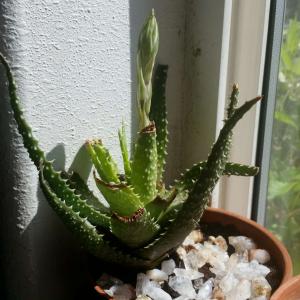

0
0
成长记
Lucky Coyote
2018年05月12日

transplanted this into a very loose and well-draining soil mixture, hopefully the white on the leaves goes away soon
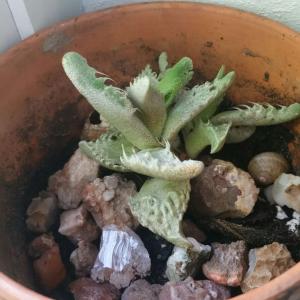
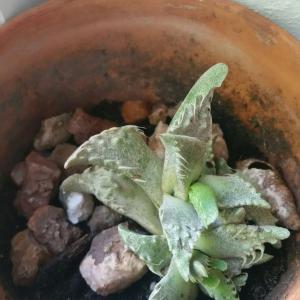


1
0
成长记
Lucky Coyote
2018年05月10日

today on variety pot hour: a transplant is planned for a majority of these babies :/ hopefully my new soil mix will help them out
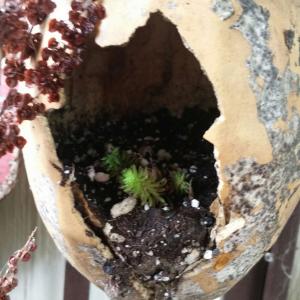
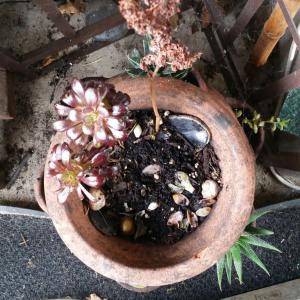
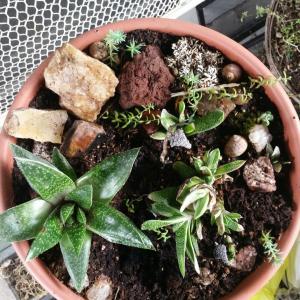
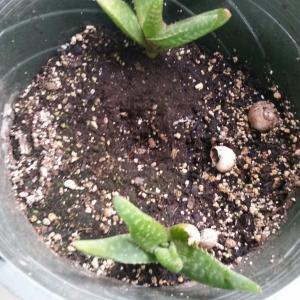




0
0
成长记
Lucky Coyote
2018年05月09日

actually doing very well after I transplanted it into my new soil mix :3 I'm a little confused about what those red bulbs growing out of its side, but otherwise amazing.
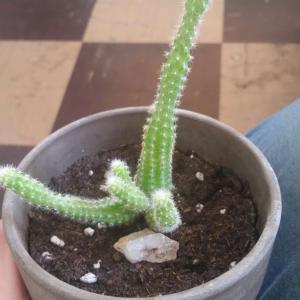
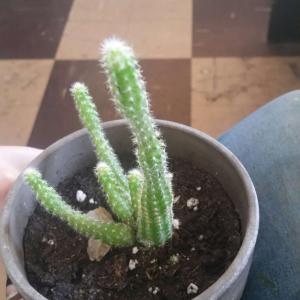

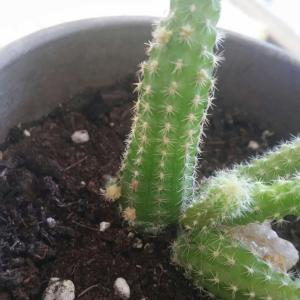
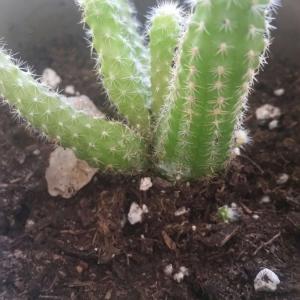





0
0
成长记
Plantlin
2018年05月06日

Put in a different pot, but not added any new soil, left everyrhing as it was!


1
0
文章
Miss Chen
2018年04月28日

Most garden vegetables prefer well-drained loamy soil with a neutral pH. However, in many parts of North America, especially the Appalachian Mountains and other hilly regions, good drainage can be difficult to find. Clay soils produce stunted growth and encourage fungal diseases, such as root rot. Amending your soil with additives or choosing vegetables that grow well in this type of soil increase your chances of a healthy, productive garden.

Potatoes
According to the English Gardening website, potatoes are a traditional crop for breaking up clay soils. These plants grow in a wide range of soils, although they prefer gardens high in organic matter with a relatively acid pH. Adding compost or other organic material improves potato yields and ashes or peat decreases pH, since alkaline soils lead to potato scab disease. Potatoes reduce compaction in your clay-soil garden, making the environment friendlier for other vegetables. Avoid early varieties, as clay soils stay colder in spring than other soil types.

Peas
These plants grow well in just about any soil from clay to sand, as long as they have adequate drainage. They prefer slightly acidic to slightly alkaline soils with pH from pH 6 to pH 7.5. However, they will grow in soils with stronger acidity or alkalinity. Avoid overwatering when growing peas on clay, as too much water encourages wilt and root rot diseases. After harvest, cut the plants at soil level, leaving the roots in the ground to add nitrogen and organic material to the soil. This improves drainage and soil quality.

Cabbage
Cabbage and other members of the Brassica family grow well in soils ranging from loam to silty clay. They tolerate intermediate levels of salt, which sometimes build up in clay soils after extensive fertilizer use. They grow best in the cool season. As with potatoes, choose cabbages and cabbage relatives that grow during the late spring and summer, as clay soils often remain too cold for early planting.
Considerations
Even plants that do well in clay soil prefer good drainage and high fertility. Amending your clay-based soil makes it friendlier to clay-loving garden vegetables and improves yield. Adding organic materials, such as compost, manure and peat, gives your soil better nutrition and reduces the chance of water pooling. Include grass clippings, dead garden plants and organic yard waste in the fall to compost over the winter. Avoid adding sand, since the result actually compacts more easily and firmly than clay alone.

Potatoes
According to the English Gardening website, potatoes are a traditional crop for breaking up clay soils. These plants grow in a wide range of soils, although they prefer gardens high in organic matter with a relatively acid pH. Adding compost or other organic material improves potato yields and ashes or peat decreases pH, since alkaline soils lead to potato scab disease. Potatoes reduce compaction in your clay-soil garden, making the environment friendlier for other vegetables. Avoid early varieties, as clay soils stay colder in spring than other soil types.

Peas
These plants grow well in just about any soil from clay to sand, as long as they have adequate drainage. They prefer slightly acidic to slightly alkaline soils with pH from pH 6 to pH 7.5. However, they will grow in soils with stronger acidity or alkalinity. Avoid overwatering when growing peas on clay, as too much water encourages wilt and root rot diseases. After harvest, cut the plants at soil level, leaving the roots in the ground to add nitrogen and organic material to the soil. This improves drainage and soil quality.

Cabbage
Cabbage and other members of the Brassica family grow well in soils ranging from loam to silty clay. They tolerate intermediate levels of salt, which sometimes build up in clay soils after extensive fertilizer use. They grow best in the cool season. As with potatoes, choose cabbages and cabbage relatives that grow during the late spring and summer, as clay soils often remain too cold for early planting.
Considerations
Even plants that do well in clay soil prefer good drainage and high fertility. Amending your clay-based soil makes it friendlier to clay-loving garden vegetables and improves yield. Adding organic materials, such as compost, manure and peat, gives your soil better nutrition and reduces the chance of water pooling. Include grass clippings, dead garden plants and organic yard waste in the fall to compost over the winter. Avoid adding sand, since the result actually compacts more easily and firmly than clay alone.
0
0
文章
Miss Chen
2018年04月19日

Also known as Chinese cabbage, mustard cabbage or pak choi, pechay is a native of the Orient. This leafy green is tolerant of many soil types and temperature zones, requiring little more than full sun. Quick growers, pechay leaves are ready for harvest in as little as one month. Pechay plants require little space. In fact, if you have room for one or more 6-inch pots, you can grow pechay.

Step 1
Fill a seed starter tray ¾ full with perlite. Dampen the perlite with water from a watering can.
Step 2
Lay one pechay seed on top of the perlite, in the center of each cell. Sprinkle peat moss over each seed, filling the remainder of the seed starter tray.
Step 3
Cover the seed tray with a clear plastic lid or piece of plastic wrap. Place the seed tray in an undisturbed area that receives bright, filtered sunlight.
Step 4
Check the pechay seeds daily for signs of germination, which can happen in as little as two to three days. Remove the plastic immediately when you see green shoots poking through the perlite and peat moss.

Step 5
Continue to provide the pechay seeds with filtered sunlight and damp growing medium for the first 10 days. Dampening the peat moss and perlite with water from a spray bottle should suffice. A light misting is all that is necessary. The growing medium should be moist not saturated.
Step 6
Transplant the pechay into 6-inch pots filled with organic potting soil once they reach 10 days old. Keep the soil moist at all times and continue to provide bright, filtered sunlight. Harvest the pechay when the plants are 30 days old by snipping the stems at the soil level with a pair of scissors.

Step 1
Fill a seed starter tray ¾ full with perlite. Dampen the perlite with water from a watering can.
Step 2
Lay one pechay seed on top of the perlite, in the center of each cell. Sprinkle peat moss over each seed, filling the remainder of the seed starter tray.
Step 3
Cover the seed tray with a clear plastic lid or piece of plastic wrap. Place the seed tray in an undisturbed area that receives bright, filtered sunlight.
Step 4
Check the pechay seeds daily for signs of germination, which can happen in as little as two to three days. Remove the plastic immediately when you see green shoots poking through the perlite and peat moss.

Step 5
Continue to provide the pechay seeds with filtered sunlight and damp growing medium for the first 10 days. Dampening the peat moss and perlite with water from a spray bottle should suffice. A light misting is all that is necessary. The growing medium should be moist not saturated.
Step 6
Transplant the pechay into 6-inch pots filled with organic potting soil once they reach 10 days old. Keep the soil moist at all times and continue to provide bright, filtered sunlight. Harvest the pechay when the plants are 30 days old by snipping the stems at the soil level with a pair of scissors.
0
0
文章
Miss Chen
2018年04月17日

All plants have roots through which they derive nutrients from the soil. When these roots are edible, they are called "root vegetables." When preparing carrots, for example, it is usual to cut off and discard their leaves, known as greens, and eat the long, orange roots. Consumption of root vegetables is common around the world. Some vegetables of similar appearance, especially nonroot tubers, are occasionally incorrectly considered root vegetables.
Taproots

Taproots are long, sometimes slender roots that plunge deep into the soil. Carrots are the most familiar taproots in everyday use. Carrots are related to parsley, which are prized for the green leaves. Carrots originated in Afghanistan but are now grown and eaten around the world. Other taproots include parsnips, turnips, rutabagas, daikons, celeriac, radishes and beets. Although some taproots, such as parsnips, are most often served cooked, many can be eaten raw or incorporated raw in salads and other dishes.
Tuber Roots

Tubers, in comparison to taproots, tend to be larger and more squat in shape. Tuber roots can store large quantities of nutrients, which helps some plants make it through long winters. Sweet potatoes and yams are familiar examples of tuber roots. They are often confused because they have a similar appearance and flavor. Traditionally sweet potatoes grown and eaten in the southern U.S. are called yams even though, strictly speaking, they are sweet potatoes. Often large and high in sugar, sweet potatoes and yams are best cooked before eating. Other examples of tuber root vegetables include cassava, yucca and manioc.
Potatoes

Although potatoes are tubers, not root vegetables, they are often grouped with yams and sweet potatoes, which are tuber roots and true root vegetables. The potato is technically a stem rather than a root. Indeed, anyone who has kept potatoes too long will have seen them sprout roots. The potato does perform a similar function to a tuber root, storing nutrients from the soil. Potatoes are one of the world's main dietary staples.
Other Similar Vegetables

In addition to the potato, other tubers and some bulbs are sometimes classed with root vegetables, although in strict botanical terms they are not roots. Among these are tigernuts, groundnuts, sunchokes, arrowroot and lotus root. Members of the onion family -- including onions, shallots, garlic -- are bulbs rather than roots.
Taproots

Taproots are long, sometimes slender roots that plunge deep into the soil. Carrots are the most familiar taproots in everyday use. Carrots are related to parsley, which are prized for the green leaves. Carrots originated in Afghanistan but are now grown and eaten around the world. Other taproots include parsnips, turnips, rutabagas, daikons, celeriac, radishes and beets. Although some taproots, such as parsnips, are most often served cooked, many can be eaten raw or incorporated raw in salads and other dishes.
Tuber Roots

Tubers, in comparison to taproots, tend to be larger and more squat in shape. Tuber roots can store large quantities of nutrients, which helps some plants make it through long winters. Sweet potatoes and yams are familiar examples of tuber roots. They are often confused because they have a similar appearance and flavor. Traditionally sweet potatoes grown and eaten in the southern U.S. are called yams even though, strictly speaking, they are sweet potatoes. Often large and high in sugar, sweet potatoes and yams are best cooked before eating. Other examples of tuber root vegetables include cassava, yucca and manioc.
Potatoes

Although potatoes are tubers, not root vegetables, they are often grouped with yams and sweet potatoes, which are tuber roots and true root vegetables. The potato is technically a stem rather than a root. Indeed, anyone who has kept potatoes too long will have seen them sprout roots. The potato does perform a similar function to a tuber root, storing nutrients from the soil. Potatoes are one of the world's main dietary staples.
Other Similar Vegetables

In addition to the potato, other tubers and some bulbs are sometimes classed with root vegetables, although in strict botanical terms they are not roots. Among these are tigernuts, groundnuts, sunchokes, arrowroot and lotus root. Members of the onion family -- including onions, shallots, garlic -- are bulbs rather than roots.
0
0
文章
Miss Chen
2018年04月16日

Growing vegetables in your home garden requires a certain amount of attention to soil condition and pH level. The pH level of soil can critically affect the growth of vegetables, allowing (or preventing) roots to take up sufficient nutrition for the production of the flowers and fruit. If you live in a region with acidic soil, selecting vegetables that thrive in acidic soil will bring you a better harvest.

Potatoes
Potatoes (both Irish potatoes and sweet potatoes) prefer acidic soil conditions. The ideal pH range for this crop is 4.8 to 5.5, according to the Cornell University Vegetable Growing Guide. Potatoes need a light, loose, well-draining soil that is high in organic matter. To add nutrients and help aerate the soil, work in soil amendment such as peat moss, compost or manure at planting time. Avoid adding too much nitrogen-rich fertilizer, which will encourage the potato plants to grow foliage at the expense of tuber production.
Eggplant
Eggplants also grow well in slightly acidic soil (pH level between 5.5 and 7.5). The eggplant is a heat-loving plant that requires full sun and frost-free temperatures. The crop will benefit from the addition of compost or manure to increase the amount of organic matter in the soil. Mulching plants helps to keep down weeds and retain moisture.
Tomatoes
Tomatoes prefer a slightly acidic soil with a pH range of 6.2 to 6.8, according to the University of Rhode Island Landscape Horticulture Program. A loamy, well-draining soil that is rich in organic matter will help tomato plants grow and produce. Tomatoes also benefit from the application of fertilizer that contains phosphorus, but fertilizer with too much nitrogen can inhibit fruit production. A 5-10-10 or 5-20-20 fertilizer is recommended. These numbers designate the percentages of nitrogen, phosphorus and potassium in the fertilizer formula. Nitrogen is always the first number in the formula, phosphorus is the second and potassium is the third.

Green Peppers
Green peppers can be grown in slightly acidic soil in the range of 6.0 to 6.8. They require well-draining soil with moderate fertility for best results. Peppers are warm season vegetables that will experience blossom drop if exposed to night temperatures below 60 degrees Fahrenheit. They will also suffer from poor fruiting if the blossoms develop into the fruit (called "fruit setting") when temperatures are above 80 degrees Fahrenheit during the day, according to Ohio State horticulturist Marianne Riofrio.
Squash
Squash will grow in acidic soils with a pH range of 5.5 to 6.8, according to the University of Connecticut website. Add compost or manure at planting time to condition the soil and retain moisture. Mulching helps to control weeds that compete for nutrients with the squash plants. Do not mulch with grass clippings from lawns that have been treated with an herbicide.
Kale
Kale prefers soil in the pH range of 6.0 to 7.0 for best growth, according to the University of Rhode Island Landscape Horticulture Program. Kale is a cool weather crop that prefers daytime temperatures of 65 to 80 degrees Fahrenheit. Mulching will help to keep roots cool and free of weeds.

Potatoes
Potatoes (both Irish potatoes and sweet potatoes) prefer acidic soil conditions. The ideal pH range for this crop is 4.8 to 5.5, according to the Cornell University Vegetable Growing Guide. Potatoes need a light, loose, well-draining soil that is high in organic matter. To add nutrients and help aerate the soil, work in soil amendment such as peat moss, compost or manure at planting time. Avoid adding too much nitrogen-rich fertilizer, which will encourage the potato plants to grow foliage at the expense of tuber production.
Eggplant
Eggplants also grow well in slightly acidic soil (pH level between 5.5 and 7.5). The eggplant is a heat-loving plant that requires full sun and frost-free temperatures. The crop will benefit from the addition of compost or manure to increase the amount of organic matter in the soil. Mulching plants helps to keep down weeds and retain moisture.
Tomatoes
Tomatoes prefer a slightly acidic soil with a pH range of 6.2 to 6.8, according to the University of Rhode Island Landscape Horticulture Program. A loamy, well-draining soil that is rich in organic matter will help tomato plants grow and produce. Tomatoes also benefit from the application of fertilizer that contains phosphorus, but fertilizer with too much nitrogen can inhibit fruit production. A 5-10-10 or 5-20-20 fertilizer is recommended. These numbers designate the percentages of nitrogen, phosphorus and potassium in the fertilizer formula. Nitrogen is always the first number in the formula, phosphorus is the second and potassium is the third.

Green Peppers
Green peppers can be grown in slightly acidic soil in the range of 6.0 to 6.8. They require well-draining soil with moderate fertility for best results. Peppers are warm season vegetables that will experience blossom drop if exposed to night temperatures below 60 degrees Fahrenheit. They will also suffer from poor fruiting if the blossoms develop into the fruit (called "fruit setting") when temperatures are above 80 degrees Fahrenheit during the day, according to Ohio State horticulturist Marianne Riofrio.
Squash
Squash will grow in acidic soils with a pH range of 5.5 to 6.8, according to the University of Connecticut website. Add compost or manure at planting time to condition the soil and retain moisture. Mulching helps to control weeds that compete for nutrients with the squash plants. Do not mulch with grass clippings from lawns that have been treated with an herbicide.
Kale
Kale prefers soil in the pH range of 6.0 to 7.0 for best growth, according to the University of Rhode Island Landscape Horticulture Program. Kale is a cool weather crop that prefers daytime temperatures of 65 to 80 degrees Fahrenheit. Mulching will help to keep roots cool and free of weeds.
0
0
成长记
Shami
2018年04月16日

I tried planting these regular sunflowers today. This time I did not bury them too deep. I used soil-less medium in planting them. 3 of these pots are those sunflowers! Date: April 16, 2018
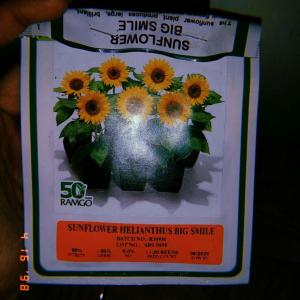
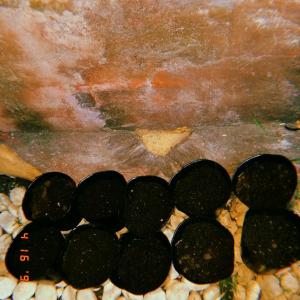
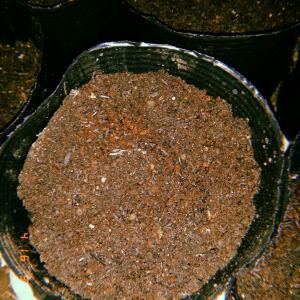



0
0
文章
Miss Chen
2018年04月14日

Shallots, the mild-tasting onions favored by the French, can be expensive to buy at the grocery store but grow easily in a home garden. If you can grow onions, you can grow shallots. All you need is well-drained soil, rich in organic matter, plenty of moisture and a few shallot sets from the grocery store. Shallots mature over the course of one summer, producing a set of small onions, rather than one large onion. Harvest them for use in sauces or savory dishes but save a few to plant for the following spring.

Step 1
Buy French shallots from the grocery store. Look for shallots that have firm, dry skins and are heavy in size. Avoid those with soft or sunken spots. Make sure you are buying true French shallots, rather than multiplier onions, which do not taste like shallots.
Step 2
Pull apart the shallot clusters to form individual bulbs. Some vendors sell individual shallots, rather than clusters, eliminating this step.
Step 3
Spread 3 inches of compost over the garden area. Dig it into a depth of 8 inches with a shovel. Plant shallots in early spring as soon as the soil is soft enough to work. Plant them 2 inches deep, with the pointed end up, and 6 inches apart.

Step 4
Water the soil frequently to keep it evenly moist but not soggy. Pull weeds by hand early because shallots don't compete well with them. A weedy garden bed diminishes yields.
Step 5
Harvest shallots in the fall when the leaves have died back. Dig them up, brush off the earth and allow them to cure in a dry location for several days. Store them in mesh bags or baskets.

Step 1
Buy French shallots from the grocery store. Look for shallots that have firm, dry skins and are heavy in size. Avoid those with soft or sunken spots. Make sure you are buying true French shallots, rather than multiplier onions, which do not taste like shallots.
Step 2
Pull apart the shallot clusters to form individual bulbs. Some vendors sell individual shallots, rather than clusters, eliminating this step.
Step 3
Spread 3 inches of compost over the garden area. Dig it into a depth of 8 inches with a shovel. Plant shallots in early spring as soon as the soil is soft enough to work. Plant them 2 inches deep, with the pointed end up, and 6 inches apart.

Step 4
Water the soil frequently to keep it evenly moist but not soggy. Pull weeds by hand early because shallots don't compete well with them. A weedy garden bed diminishes yields.
Step 5
Harvest shallots in the fall when the leaves have died back. Dig them up, brush off the earth and allow them to cure in a dry location for several days. Store them in mesh bags or baskets.
0
0
文章
Miss Chen
2018年04月10日

If you have , you're in luck. This type of soil is preferred by vegetables as it is well-draining and, more often than not, richer in available nutrients than other soil types. is so preferable that gardeners without it amend their soils to get it.
Why Loamy Soil?
Soil is made up of particles that vary greatly in size, giving each type of soil its distinctive makeup. The three major particle types are sand, silt and clay. This is why different regions have sandy, silty or clayey soils.
Sand particles are larger, grainy and course, allowing water to drain right through. Clay particles are small but heavy and hold water. Silt is in between the two.
A loamy soil has all three particle types in balance with each other. It holds moisture enough to keep plant roots moist while draining well enough to prevent roots from becoming waterlogged.
Summer Vegetables
Summer vegetables, also known as warm-season crops, grow best under the hot sun of summer. These crops tend to be tender and sensitive to cold and frost.
Tomatoes (Solanum lycopersicum), eggplant (Solanum melongena), peppers (Capsicum spp.), pumpkins (Cucurbita pepo), cucumbers (Cucumis sativus) and cantaloupe (Cucumis melo var. cantalupensis) are examples of tender and very tender crops that do well in well-drained, fertile, loamy soil. Cucumbers, pumpkins, cantaloupes and many of their relatives thrive in warm soil; you must wait until the soil reaches over 70 degrees Fahrenheit. These three, in particular, are also heavy feeders.

These crops germinate best when soil temperatures are between 80 and 95 degrees Fahrenheit. Some, including cantaloupe and eggplant, may become stunted when daytime temperatures stay at or below 55 degrees for a week.
Cool-Season Crops
Although summer vegetables take center stage, a large variety of crops do better in cooler temperatures. These are known as cool-season crops.
Cool-season crops include most of the root and leafy crops -- most of which also prefer a rich, loamy soil. Some are considered semihardy, meaning they prefer cooler temperatures and can handle light frost. Others are hardy and thrive in -- believe it or not -- late fall, winter and early spring.
Semihardy Crops
Semihardy crops tolerate light frosts which typically occur when the temperature hits between 29 and 32 degrees Fahrenheit.
Root crops in this category include carrots (Daucus carota subsp. sativus), which thrive in loose, deep loamy soil free of stones; beets (Beta vulgaris), which thrive in loamy soil high in organic matter; and rutabaga (Brassica napobrassica), which will grow in almost any soil but produces best when moisture-rich loamy soil is the growing medium.

Leafy crops that are semihardy include lettuces (Lactuca sativum), raddichio (Cichorium intybus var. foliosum) and Swiss chard (Beta vulgaris sups. vulgaris).
Hardy Vegetables
Hardy vegetables are those that can't take the heat -- they need the coolness of fall, winter and early spring for overall health and to produce the best flavor. Several cole crops -- many varieties of the mustard family -- take center stage here. According to University of New Hampshire Cooperative Extension, cole crops do best in well-drained loams.
Cole crops include kale (Brassica oleracea var. sabellica), broccoli (Brassica oleracea var. italica), brussels sprouts (Brassica oleracea var. gemmifera) and collards (Brassica oleracea var. acephala).

Other hardy vegetables include radish (Raphanus sativus), spinach (Spinacia oleracea) and turnip (Brassica rapa subsp. rapa).
Understanding Plant Requirements
Most vegetables will list "moist, well-drained soil" on their plant tags. This is a vague term, but it does hold value. The term means your soil needs to allow water to drain through quick enough that it doesn't form standing water or hold water on the roots. It should also have particles and a texture capable of holding moisture without pooling. All these vegetables do best in moist, well-drained soil, making loamy soil the ideal growing medium.
Why Loamy Soil?
Soil is made up of particles that vary greatly in size, giving each type of soil its distinctive makeup. The three major particle types are sand, silt and clay. This is why different regions have sandy, silty or clayey soils.
Sand particles are larger, grainy and course, allowing water to drain right through. Clay particles are small but heavy and hold water. Silt is in between the two.
A loamy soil has all three particle types in balance with each other. It holds moisture enough to keep plant roots moist while draining well enough to prevent roots from becoming waterlogged.
Summer Vegetables
Summer vegetables, also known as warm-season crops, grow best under the hot sun of summer. These crops tend to be tender and sensitive to cold and frost.
Tomatoes (Solanum lycopersicum), eggplant (Solanum melongena), peppers (Capsicum spp.), pumpkins (Cucurbita pepo), cucumbers (Cucumis sativus) and cantaloupe (Cucumis melo var. cantalupensis) are examples of tender and very tender crops that do well in well-drained, fertile, loamy soil. Cucumbers, pumpkins, cantaloupes and many of their relatives thrive in warm soil; you must wait until the soil reaches over 70 degrees Fahrenheit. These three, in particular, are also heavy feeders.

These crops germinate best when soil temperatures are between 80 and 95 degrees Fahrenheit. Some, including cantaloupe and eggplant, may become stunted when daytime temperatures stay at or below 55 degrees for a week.
Cool-Season Crops
Although summer vegetables take center stage, a large variety of crops do better in cooler temperatures. These are known as cool-season crops.
Cool-season crops include most of the root and leafy crops -- most of which also prefer a rich, loamy soil. Some are considered semihardy, meaning they prefer cooler temperatures and can handle light frost. Others are hardy and thrive in -- believe it or not -- late fall, winter and early spring.
Semihardy Crops
Semihardy crops tolerate light frosts which typically occur when the temperature hits between 29 and 32 degrees Fahrenheit.
Root crops in this category include carrots (Daucus carota subsp. sativus), which thrive in loose, deep loamy soil free of stones; beets (Beta vulgaris), which thrive in loamy soil high in organic matter; and rutabaga (Brassica napobrassica), which will grow in almost any soil but produces best when moisture-rich loamy soil is the growing medium.

Leafy crops that are semihardy include lettuces (Lactuca sativum), raddichio (Cichorium intybus var. foliosum) and Swiss chard (Beta vulgaris sups. vulgaris).
Hardy Vegetables
Hardy vegetables are those that can't take the heat -- they need the coolness of fall, winter and early spring for overall health and to produce the best flavor. Several cole crops -- many varieties of the mustard family -- take center stage here. According to University of New Hampshire Cooperative Extension, cole crops do best in well-drained loams.
Cole crops include kale (Brassica oleracea var. sabellica), broccoli (Brassica oleracea var. italica), brussels sprouts (Brassica oleracea var. gemmifera) and collards (Brassica oleracea var. acephala).

Other hardy vegetables include radish (Raphanus sativus), spinach (Spinacia oleracea) and turnip (Brassica rapa subsp. rapa).
Understanding Plant Requirements
Most vegetables will list "moist, well-drained soil" on their plant tags. This is a vague term, but it does hold value. The term means your soil needs to allow water to drain through quick enough that it doesn't form standing water or hold water on the roots. It should also have particles and a texture capable of holding moisture without pooling. All these vegetables do best in moist, well-drained soil, making loamy soil the ideal growing medium.
0
0
文章
Miss Chen
2018年04月10日

Determining the water needs of a cucumber plant requires more than reading the seed packet. The quality of the soil, local climate and irrigation method used all affect the amount of water necessary to grow productive cucumbers. Irrigation needs change throughout the gardening season. You must remain attentive throughout the gardening season and determine the cucumber's water needs on a weekly basis.

Soil and Moisture
The type and quality of the soil in the garden influences the water needs of the cucumber plants. The optimum garden provides rich, well-drained soil, but cucumbers can grow successfully in less-optimum soils with proper irrigation. Sandy soils drain quickly so they dry out more often. Cucumbers grown in sandy soil usually require additional irrigation. Clay soil retains water and tends to compact, which inhibits water movement around the cucumber roots. Adding compost or peat moss to the bed before planting aids drainage in heavy soils.
Watering Schedule
Cucumbers typically need 1 to 2 inches of water each week. The plants may require no irrigation when rainfall supplies the required amount of moisture. Feeling the soil before irrigating is a more reliable method of supplying sufficient moisture than sticking to a rigid watering schedule. Cucumbers require watering when the top inch of soil is dry, but before the soil dries at a greater depth. Feel the soil two to three times a week when there is no rainfall and water when necessary. An inch of water thoroughly moistens the top 6 inches of the soil.
Mulch and Water Needs
Mulch affects the amount of watering necessary to maintain your cucumber plants. Plastic mulch applied over the bed before you plant retains the most moisture in the soil, so less watering is necessary. Plastic makes it more difficult to check the soil and deliver water. Installing drip irrigation under the mulch ensures the moisture reaches the soil beneath the mulch. An organic mulch, such as straw, also retains moisture so less watering is necessary. It's possible to water plants with a hose or watering can when organic mulch is applied, and you can still feel the soil beneath the mulch to determine the moisture level.

Watering Tips
Watering the cucumbers in the morning ensures the moisture penetrates to the root zone of the plants before the water evaporates during the heat of the day. Plants watered in the morning may require less irrigation than those watered in the afternoon. Supply the water directly to the soil at the base of instead of from overhead. Overhead watering makes the foliage wet and more prone to fungal growth. More moisture is also lost to evaporation when you overhead water, necessitating more frequent irrigation.

Soil and Moisture
The type and quality of the soil in the garden influences the water needs of the cucumber plants. The optimum garden provides rich, well-drained soil, but cucumbers can grow successfully in less-optimum soils with proper irrigation. Sandy soils drain quickly so they dry out more often. Cucumbers grown in sandy soil usually require additional irrigation. Clay soil retains water and tends to compact, which inhibits water movement around the cucumber roots. Adding compost or peat moss to the bed before planting aids drainage in heavy soils.
Watering Schedule
Cucumbers typically need 1 to 2 inches of water each week. The plants may require no irrigation when rainfall supplies the required amount of moisture. Feeling the soil before irrigating is a more reliable method of supplying sufficient moisture than sticking to a rigid watering schedule. Cucumbers require watering when the top inch of soil is dry, but before the soil dries at a greater depth. Feel the soil two to three times a week when there is no rainfall and water when necessary. An inch of water thoroughly moistens the top 6 inches of the soil.
Mulch and Water Needs
Mulch affects the amount of watering necessary to maintain your cucumber plants. Plastic mulch applied over the bed before you plant retains the most moisture in the soil, so less watering is necessary. Plastic makes it more difficult to check the soil and deliver water. Installing drip irrigation under the mulch ensures the moisture reaches the soil beneath the mulch. An organic mulch, such as straw, also retains moisture so less watering is necessary. It's possible to water plants with a hose or watering can when organic mulch is applied, and you can still feel the soil beneath the mulch to determine the moisture level.

Watering Tips
Watering the cucumbers in the morning ensures the moisture penetrates to the root zone of the plants before the water evaporates during the heat of the day. Plants watered in the morning may require less irrigation than those watered in the afternoon. Supply the water directly to the soil at the base of instead of from overhead. Overhead watering makes the foliage wet and more prone to fungal growth. More moisture is also lost to evaporation when you overhead water, necessitating more frequent irrigation.
0
0






